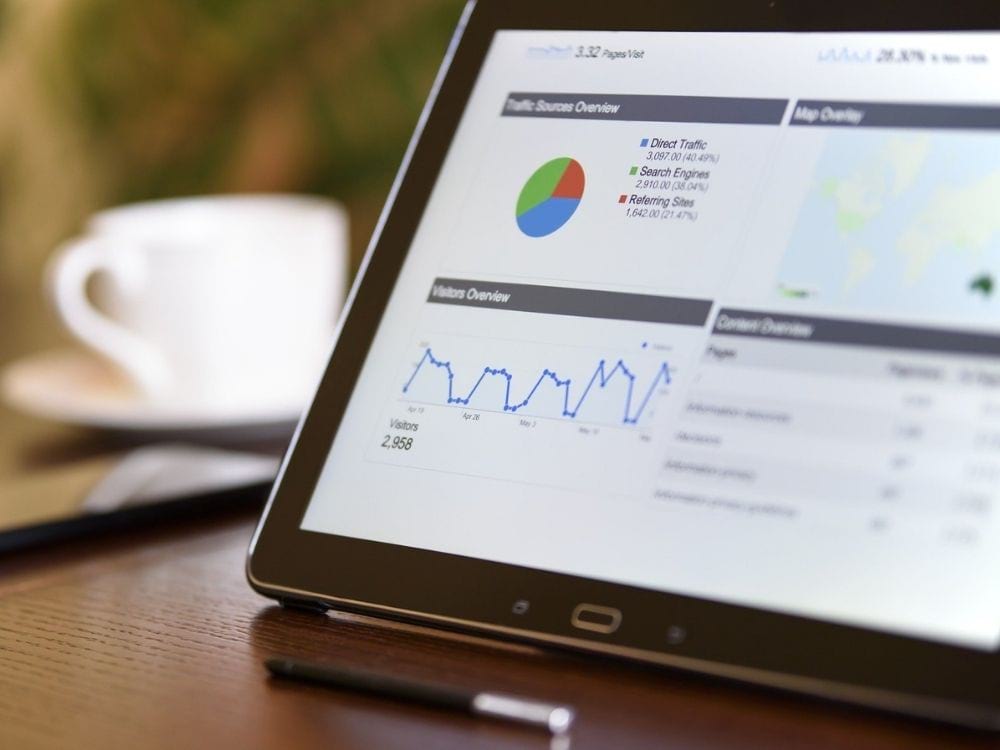You’ve launched your digital advertising campaign on Google Ads, you’ve added the links but you’re not getting the click-through rates you were hoping for. A low click-through rate equals little in the way of leads and sales.
We get it; online advertising metrics are a minefield – click-through rates, bounce rates and conversion rates. When 51% of Google searches end without a click, you can see why the biggest challenge for marketing professionals with PPC advertising campaigns today is the click-through rate.
So, how can you improve your click-through rate? People’s interaction with advertisements online has changed significantly over the past year but there are ways in which you can improve your business success.
What Is Click-Through-Rate?
According to Google, it is:
“The percentage of people that see your online advertisement and click-through to your website or specific landing page.”
The click-through rate (CTR) is a tool to measure the performance of your PPC ads online. For example, if your online advertisement received 100 impressions, i.e. it showed up in a Google search, 100 times and there were 10 clicks on the action button or link, the CTR would be 10%.
For marketing professionals today, the click-through rate is the predominant measure of online marketing success.
What Does the Click-Through-Rate Tell You?

This key metric shows that out of all the people that saw your ad in their SERPs, how many of them clicked on the link or call–to–action (CTA) button. If you are running several campaigns, CTR evaluates the overall success of your online marketing by comparing the performance of each ad campaign.
How good your CTR rate is depends on a variety of factors, such as your industry, your links and link placement, as well as the number of ad campaigns you are running. The links you include in your advertisement, and the link placement, are key elements to the success of your campaign. If the link is not clearly visible to the customer or not placed in an optimized position, they may miss the link and you’ve lost a click-through.
For example, if you are using branded keywords, such as your brand name, you may see a high CTR due to users specifically searching for your product, service or brand (company) name. However, if you are bidding on broad, non-branded keywords you are more likely to see a low CTR, even below 1% in some cases.
That said, having a low CTR is not always a bad thing. For example, if your marketing campaign has the business objective of generating leads, you could be dealing with ambiguous keywords. If you have a keyword that is broad in its definition, it will probably result in a low CTR. But if that keyword ends up providing plenty of leads and at a better cost than expected, then its performance outweighs the CTR.
The level of CTR your online advertisement achieves is largely down to your industry. Industry averages vary, for example:
- Finance and insurance have an average CTR of 2.91% for search network advertisements, and 0.52% for display network advertisements.
- Technology’s average CTRs are 2.09% for ads on the search network, and 0.39% for display networks.
- Travel and hospitality, on the other hand, have an industry average CTR of 4.68% on search network ads, and 0.47% on display network ads.
However, the CTR should not be confused with the open rate, or click-to-open rate (CTOR). The click-through rate measures the number of people who interacted with advertisements. The CTOR is the number of people that saw your advertisement, compared to the number of people that clicked on the CTA.
How to Calculate a Click-Through-Rate?
The CTR for Google Ads campaigns is calculated using the following rate formula:
Number of clicks on the ad / Number of times the ad appears x 100
So, if your ad was seen 100 customers and it received 10 people clicked-through to your landing page, your click-through rate is 10%.
Each ad in a Google Ads campaign, as well as each listing and keyword, has its own click-through rate, which is visible in your Google Ads account dashboard.
The Impact of CTR
Like bounce rates and conversion rates, your click-through rate has a significant impact on your digital marketing strategies.
Your click-through rate has an impact on your SEO firstly because you want your audience to click-through to your website or landing page when they see your advertisement. Secondly, Google uses organic click-through rates to rank SERP results. To improve your PPC click-through rate and boost SEO:
- Optimize your advertisement title.
- Include meta descriptions for any images or videos that are relevant to your content, and avoid duplicate meta descriptions.
- Keep your URLs short, concise and clear. Aim to match your URL to the title, where possible, avoid punctuation and add keywords.
- Ensure your keyword to keyword phrases are included in the content, title and meta descriptions.
Google’s Ad Rank is the formula that determines where online advertisements will be positioned in SERPs. Google’s Ad Rank score is determined by:
- The anticipated click-through rate
- The PPC bid amount
- Ad and content relevance
- The landing page experience
- The anticipated impact of ads formats and extensions
According to Google, “Quality Score is an aggregated estimate of your overall performance in ad auctions and is not used to determine Ad Rank.”
However, whilst Google says that a Quality Score of 1-10, which you can see in your Google Ads account, is not used to determine your Ad Rank, they do use it to estimate the anticipated click-through rate, landing page experience and ad relevance.
What is a Good Click-Through-Rate?
There is no one specific answer to this question. It very much depends on content, links and link placement, keywords used as well as your industry.
If your CTR is above average or high, this is a good indication that your content, and imagery, resonates with your target audience. It also shows that your link placement is in the right location within the content, and is appealing enough to encourage people to click-through to your landing page.
Generally, marketers are able to track, measure and see the results of their campaigns within 72 hours.
Marketing professionals are able to personalize their email marketing to connect with their target audience, ultimately generating higher CTRs and ROI. With the use of digital marketing automation and lead generation tools, marketers are able to automate their online marketing campaigns.
Bant.io’s lead generation and sales acceleration platform helps marketers automate their PPC campaigns by reaching your target audience, developing comprehensive marketing strategies with specific targeting.
How Can You Improve Your CTR?

If your marketing campaigns are generating a low CTR, there are a number of ways in which to improve your CTR.
- Content is king – despite all the automated tools and metrics, your content is still the number one factor in improving your click-through rate.
- Make it personal – B2B marketing teams that tailor and personalize their online content will achieve above-average click-through rates.
- Do your A/B split testing – by splitting your ad campaign with variations to the headings, content and link placement, marketers can determine which version generates the better results.
- Think mobile-first – with the increase in the use of smartphones, tablets and other devices to search online browsers, your landing pages must be optimized for mobile devices..
- Call-to-Action (CTA) – the general rule is ‘less is more’. Keep to just one CTA in your ad content but make sure is clearly visible.
- Images and videos – Vero’s research determined that advertisements with at least one high quality image generated a higher CTR.
The click-through rate of a PPC campaign is one of the most important metrics marketers use to measure performance. It indicates what is working with your campaign and what isn’t.
It tells you a significant amount about your customers and how to reach your target audience, about the relevance of your content and imagery, and where you need to make the necessary adjustments to improve your overall marketing strategies.
If you’d like to try Bant.io, schedule a personalized demo with one of our professionals today. With our dashboard, you can keep track of every KPI that matters, including CTR, thus improving the effectiveness of your campaigns.
FAQs
What is the difference between clicks and click-through-rate?
The click rate is the number of times your ad showed up in SERPs and the people that clicked through to your landing page or website. The click-through rate is the percentage of people that clicked-through.
Can CTR be more than 100%?
Generally, a CTR of 100% or more is invalid for several reasons:
- Google Ads site links are enabled – users can access your ads by opening the ad and the site link in a new window or new tab. This generates two separate clicks for one ad impression.
- Users return to SERPs – users will click a Google Ad, exit the ad to go back to SERPs and then click the same ad again.
- Invalid clicks – some users will click on a Google Ad several times in one day. Invalid clicks include double-clicks, dubious clicks to increase profits, manual clicks to increase the cost of ads as well as clicks and impressions done by automated tools to disrupt advertising campaigns.
What is a normal click-through-rate?
Google Ads’ average click-through rate is approximately 2% across all industries. Most marketers aim for a click-through rate of between 3% and 5%.
What is a good impression-to-click ratio?
5% is considered a good, competitive impression to click ratio.
What is a good cost per 1000 impressions?
A typical, or average, cost per 1000 impressions on Google Ads starts at around $2.80 but can rise to as much as $35.
How does CTR impact ad rank?
An advertisement’s anticipated CTR is a factor considered by Google when ranking ads to determine where they should appear in SERPs.
How does CTR impact quality score?
Whilst Google says the Quality Score is not used in ranking Google Ads, it is considered when determining an advertisement’s ad rank through the anticipated click-through rate.

